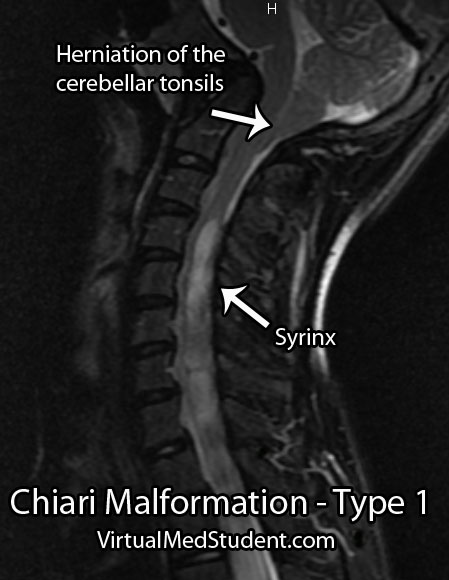A respiratory alkalosis occurs when a person breathes too rapidly. The result is a decrease in PaCO2 (ie: the amount of CO2 dissolved in the blood). This causes the blood to become alkalotic (less acidic), which is manifest by an increase in the blood’s pH. The reason the blood becomes less acidic is based on Le Chatelier’s principle. If we take a look at the following equation:
HCO3– + H+ —> H2CO3 –> CO2(g) + H2O
You’ll notice that CO2 (on the right most part of the equation) is what is exhaled via the lungs. When a patient is hyperventilating there is much less CO2 than normal in the blood stream. The body compensates by combining HCO3– and H+ to form more CO2. The resulting decrease in H+ causes the alkalosis (ie: rise in pH).
Causes of Respiratory Alkalosis
So what could cause someone to hyperventilate? The most common things are pain, anxiety, and fever. If the patient is in the ICU and being mechanically ventilated then a respiratory alkalosis may develop if the ventilator is set to give too many breaths per minute.
The most common causes of hyperventilation are:
- Fever
- Pain
- Anxiety
- Overventilating a mechanically ventilated patient
Acute Versus Chronic and Kidney Compensation
A respiratory alkalosis can be either acute or chronic. The difference depends on how much the kidney compensates for the change in pH. How exactly does the kidney compensate? It dumps HCO3 (aka: bicarb) into the urine. This helps offset the alkalosis and brings the bodies pH back to normal limits.
How do we determine if the kidney is acutely or chronically compensating? We measure the bicarb level. The kidney is acutely compensating if the HCO3 level is decreased 1 to 2 mmol/L per every 10 mmHg drop in the PaCO2 level. The kidney is chronically compensating if the HCO3 level is decreased 4 to 5 mmol/L per every 10 mmHg drop in PaCO2.
For example, if a patient’s PaCO2 on blood gas analysis is found to be 20 mmHg (a normal level is around 40) we would say there is a 20 mmHg drop present. If the HCO3 (determined by a chemistry panel) is at 19 (for argument sake we’ll say a normal bicarbonate level is 23) then that is a 4 mmol drop in the bicarb level for the 20 mmHg drop in CO2, or approximately 2 mmol drop in bicarb per 10 mmHg drop in CO2. This would mean the patient’s kidney is acutely compensating for the respiratory alkalosis.
| Bicarbonate Level (HCO3) | |
|---|---|
| Acute Compensation | Decreased by 1-2 mmol/L for every 10 mmHg decrease in the PaCO2 |
| Chronic Compensation | Decreased by 4-5 mmol/L for every 10 mmHg decrease in the PaCO2 |
Why is it important to determine if acute or chronic compensation is occurring? For starters, it gives us a better idea of what may be causing the respiratory alkalosis. If the kidney is acutely compensating we know that the respiratory alkalosis is new. The patient is likely having an acute reaction to something (ie: pain, anxiety, panic attack, etc.). If the compensation is chronic then we know that the patient has been breathing at a faster than normal rate for a prolonged period of time. This may be seen in pregnancy, COPD, and emphysema.
Treatment
Treatment is very straightforward: eliminate the underlying cause! If the patient appears in pain then give pain medication. Fever? Hit them with some acetaminophen. If the patient is mechanically ventilated then decrease the respiratory rate. Once the stimulus for hyperventilating is removed the respiratory alkalosis should improve.
Overview
A respiratory alkalosis occurs when a patient is breathing too rapidly, which cause too much CO2 to be removed from the bloodstream. There are numerous causes including anxiety, pain, and fever. The kidney can acutely or chronically compensate for a respiratory alkalosis depending on how long it has been present. Treatment is to fix the underlying cause.
A Little More Learning…
References and Resources
- Lynes D. An introduction to blood gas analysis. Nurs Times. 2003 Mar 18-24;99(11):54-5.
- Ayers P, Warrington L. Diagnosis and treatment of simple acid-base disorders. Nutr Clin Pract. 2008 Apr-May;23(2):122-7.
- McCurdy DK. Mixed metabolic and respiratory acid-base disturbances: diagnosis and treatment. Chest. 1972 Aug;62(2):Suppl:35S-44S.
- O’Croinin D, Ni Chonghaile M, Higgins B, et al. Bench-to-bedside review: Permissive hypercapnia. Crit Care. 2005 Feb;9(1):51-9. Epub 2004 Aug 5.
- Curley G, Laffey JG, Kavanagh BP. Bench-to-bedside review: carbon dioxide. Crit Care. 2010;14(2):220. Epub 2010 Apr 30.
